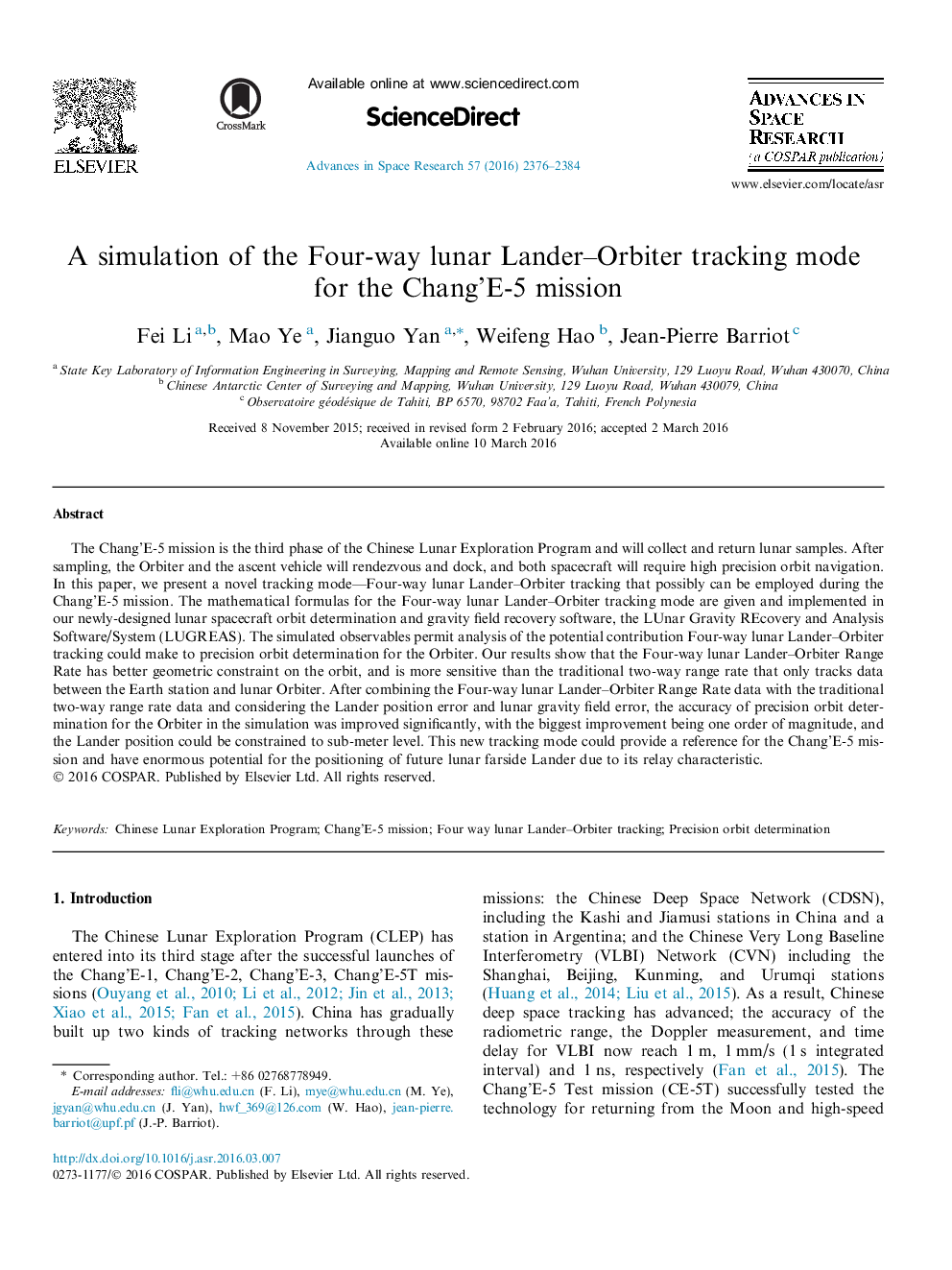| کد مقاله | کد نشریه | سال انتشار | مقاله انگلیسی | نسخه تمام متن |
|---|---|---|---|---|
| 1763288 | 1019993 | 2016 | 9 صفحه PDF | دانلود رایگان |
• A Four-way lunar Lander–Orbiter Range Rate tracking model is proposed.
• This tracking mode is more sensitive to the initial state than traditional two way tracking mode.
• This tracking mode can significantly improve the lunar Orbiter precision orbit determination accuracy.
• The Four-way Range Rate data can constraint the Lander position within sub-meter level.
The Chang’E-5 mission is the third phase of the Chinese Lunar Exploration Program and will collect and return lunar samples. After sampling, the Orbiter and the ascent vehicle will rendezvous and dock, and both spacecraft will require high precision orbit navigation. In this paper, we present a novel tracking mode—Four-way lunar Lander–Orbiter tracking that possibly can be employed during the Chang’E-5 mission. The mathematical formulas for the Four-way lunar Lander–Orbiter tracking mode are given and implemented in our newly-designed lunar spacecraft orbit determination and gravity field recovery software, the LUnar Gravity REcovery and Analysis Software/System (LUGREAS). The simulated observables permit analysis of the potential contribution Four-way lunar Lander–Orbiter tracking could make to precision orbit determination for the Orbiter. Our results show that the Four-way lunar Lander–Orbiter Range Rate has better geometric constraint on the orbit, and is more sensitive than the traditional two-way range rate that only tracks data between the Earth station and lunar Orbiter. After combining the Four-way lunar Lander–Orbiter Range Rate data with the traditional two-way range rate data and considering the Lander position error and lunar gravity field error, the accuracy of precision orbit determination for the Orbiter in the simulation was improved significantly, with the biggest improvement being one order of magnitude, and the Lander position could be constrained to sub-meter level. This new tracking mode could provide a reference for the Chang’E-5 mission and have enormous potential for the positioning of future lunar farside Lander due to its relay characteristic.
Journal: Advances in Space Research - Volume 57, Issue 11, 1 June 2016, Pages 2376–2384
